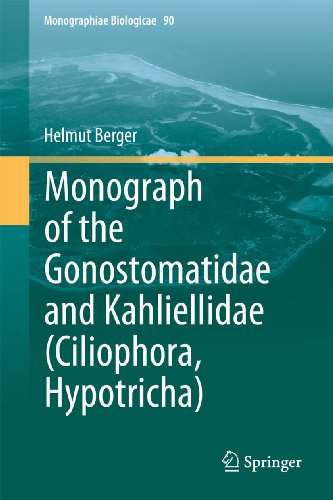

Most ebook files are in PDF format, so you can easily read them using various software such as Foxit Reader or directly on the Google Chrome browser.
Some ebook files are released by publishers in other formats such as .awz, .mobi, .epub, .fb2, etc. You may need to install specific software to read these formats on mobile/PC, such as Calibre.
Please read the tutorial at this link: https://ebookbell.com/faq
We offer FREE conversion to the popular formats you request; however, this may take some time. Therefore, right after payment, please email us, and we will try to provide the service as quickly as possible.
For some exceptional file formats or broken links (if any), please refrain from opening any disputes. Instead, email us first, and we will try to assist within a maximum of 6 hours.
EbookBell Team

0.0
0 reviewsThe present monograph is the fourth of six volumes which review the Hypotricha, a major group of the spirotrichs. The book is about the Gonostomatidae, the Kahliellidae, and some taxa of unknown position in the hypotrichs.
Gonostomum was previously misclassified in the Oxytrichidae because its type species Gonostomum affine has basically an 18-cirri pattern, which is dominant in the oxytrichids. A new hypothesis, considering also molecular data, postulates that this 18-cirri pattern evolved in the last common ancestor of the hypotrichs and therefore it appears throughout the Hypotricha tree. The simple dorsal kinety pattern, composed of only three bipolar dorsal kineties, and gene sequence analyses strongly suggest that Gonostomum branches off rather early in the phylogenetic tree. Thus, the Gonostomatidae, previously synonymised with the oxytrichids, are reactivated to include the name-bearing type genus and other genera (e.g., Paragonostomum, Wallackia, Cladotricha) which have the characteristic gonostomatid oral apparatus. The Kahliellidae are a rather vague group mainly defined via the preservation of parts of the parental infraciliature. The kahliellids preliminary comprise, besides the name-bearing type genus Kahliella, genera such as Parakahliella and its African pendant Afrokahliella or the monotypic Engelmanniella. In total 68 species distributed in 21 genera and subgenera are revised. As in the previous volumes almost all morphological, morphogenetic, molecular, faunistic, and ecological data, scattered in almost 700 papers, are compiled so that the four volumes (Oxytrichidae, Urostyloidea, Amphisiellidae and Trachelostylidae, Gonostomatidae and Kahliellida) provide a detailed insight into the biology of almost 500 species of hypotrichs. The series is an up-to-date overview about this highly interesting taxon of spirotrichous ciliates mainly addressed to taxonomists, cell biologists, ecologists, molecular biologists, and practitioners.